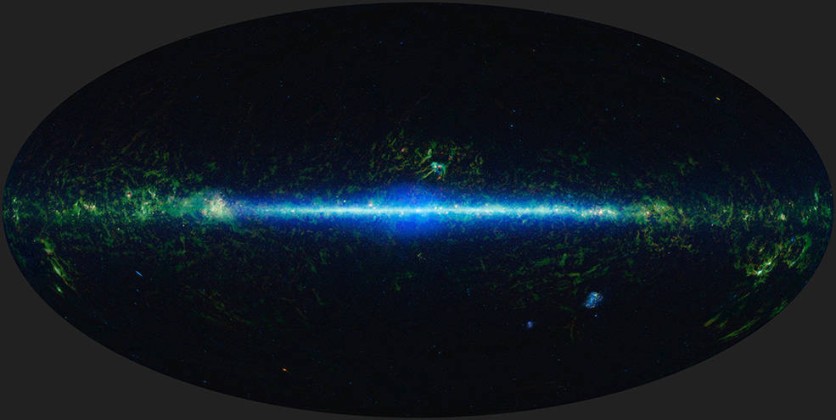Snapshots of the sky give us a glimpse of what it's like to live up there, but movies immerse us fully into the wonders of the universe. Luckily, we can revel in the full glories of the sky thanks to a movie by NASA's NEOWISE space telescope.
The Near-Earth Object Wide Field Infrared Survey Explorer, or NEOWISE, spacecraft from NASA makes one trip halfway around the Sun every six months while collecting photos from all angles.
An "all-sky" map made out of those photos can be stitched together to display the location and brightness of hundreds of millions of objects, according to the space agency.

Time-Lapse Movie
Scientists have constructed a time-lapse movie of the sky using 18 of the all-sky maps the spacecraft has produced. The 19th and 20th will be revealed in March 2023.
This movie shows changes in the sky that have occurred over a decade.
Stars, Asteroids, Black Holes
Each map is a priceless tool for astronomers, but when seen in a time-lapse sequence, they become much more valuable in understanding the nature of the cosmos.
NASA said that in time-domain astronomy, comparing the maps can uncover distant objects that have altered position or brightness over time.
The night sky could make it appear as though nothing ever changes, but that is untrue, according to Amy Mainzer, the NEOWISE principal investigator at the University of Arizona in Tucson.
"Stars are flaring and exploding. Asteroids are whizzing by. Black holes are tearing stars apart. The universe is a really busy, active place."
NEOWISE began as a data processing initiative to obtain asteroid detections and features from WISE, an observatory that was launched in 2009 and charged with searching the whole sky for and studying extrasolar objects. The spacecraft employed cryogenically cooled detectors to make it sensitive to infrared light.
NEOWISE's Data
The infrared telescope has kept on scanning the sky every six months, and astronomers have kept using the data to investigate things outside of our solar system.
For instance, in 2020, researchers published the updated version of the CatWISE project, which is a catalog of objects compiled from 12 NEOWISE all-sky maps.
Researchers use the catalog to investigate brown dwarfs, a class of objects that are widespread throughout the galaxy and hide in the shadows near our Sun.
Despite having a similar formation to stars, brown dwarfs are unable to build up enough mass to initiate fusion, the process that gives stars their light, according to NASA.
Using the first two WISE all-sky maps, researchers discovered 200 brown dwarfs just 65 light-years from the Sun. The extra maps revealed an additional 60, doubling the number of Y-dwarfs.
Studies on the formation of stars have also benefited from observing how the sky has changed over the past ten years. NEOWISE can look inside the dusty cloaks encasing protostars or hot gaseous balls almost ready to become stars.
The information from NEOWISE has also increased astronomers' knowledge of black holes since millions of supermassive black holes were found in the nuclei of far-off galaxies during the initial WISE study.
Researchers have also measured the size of hot, blazing gas discs encircling far-off black holes, which are too small and too far away for any telescope to resolve. They did this using NEOWISE data and a method called echo mapping.
Related Article : NASA Gears to Break the Sound Barrier Once Again After 75 Years
This article is owned by Tech Times
Written by Joaquin Victor Tacla
ⓒ 2025 TECHTIMES.com All rights reserved. Do not reproduce without permission.




